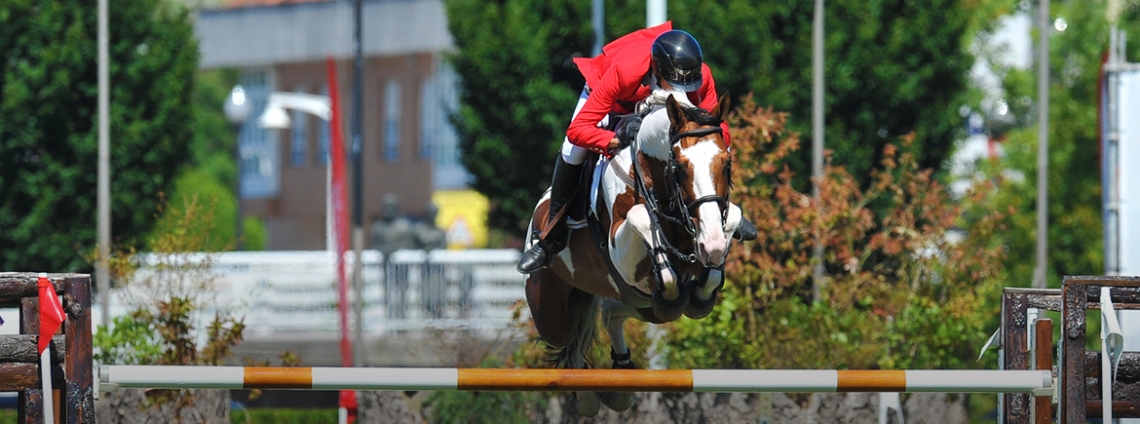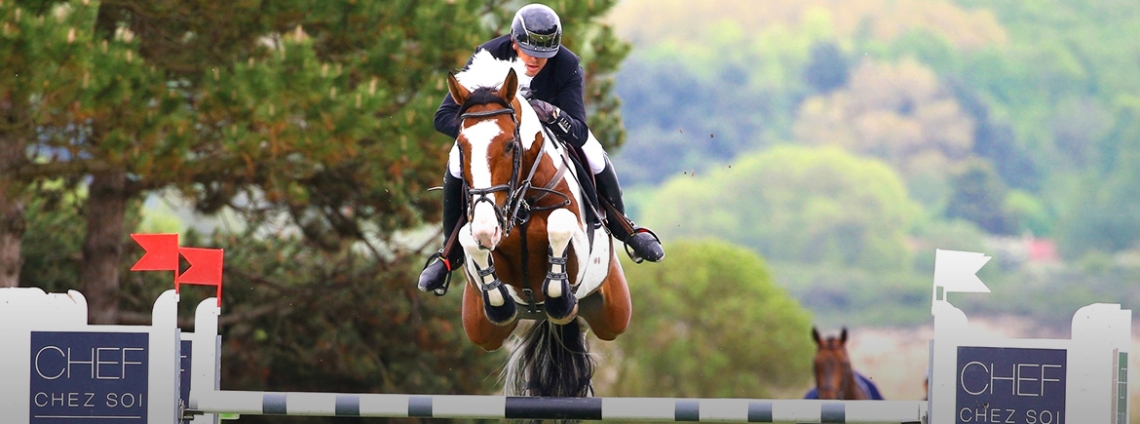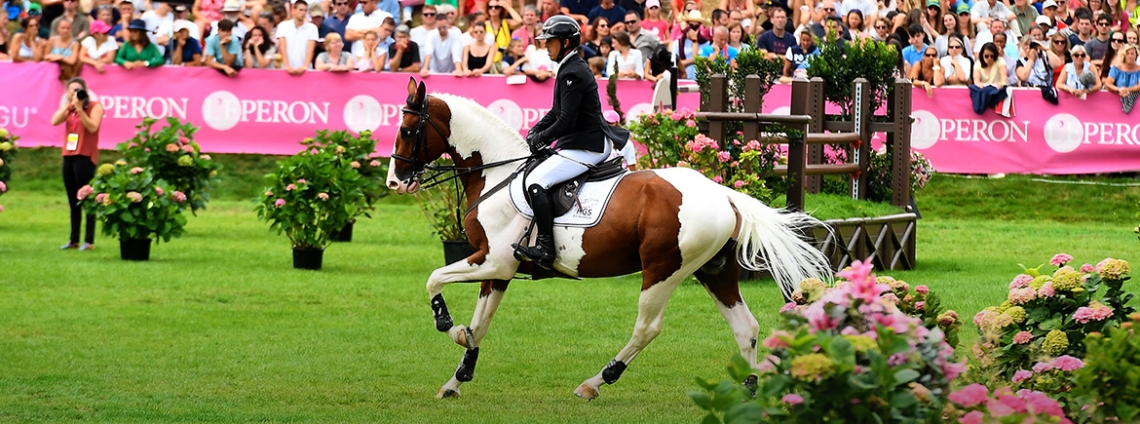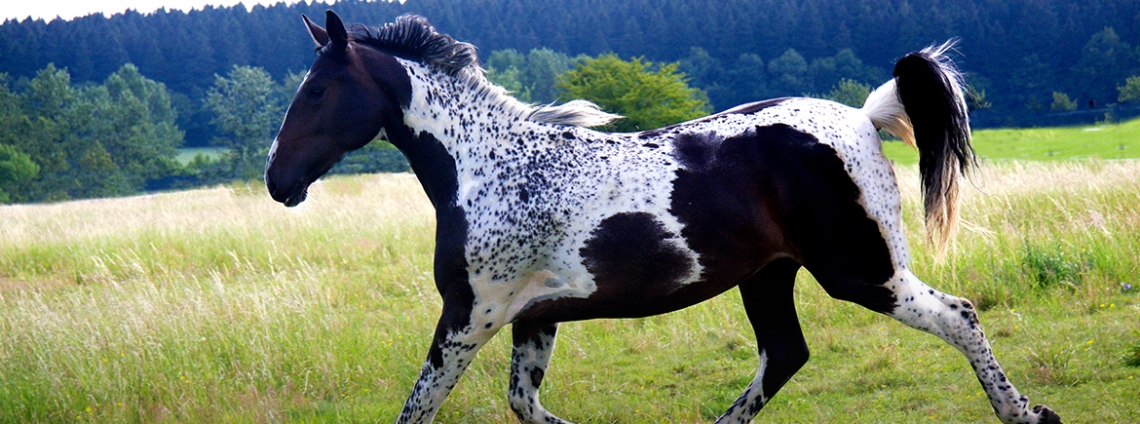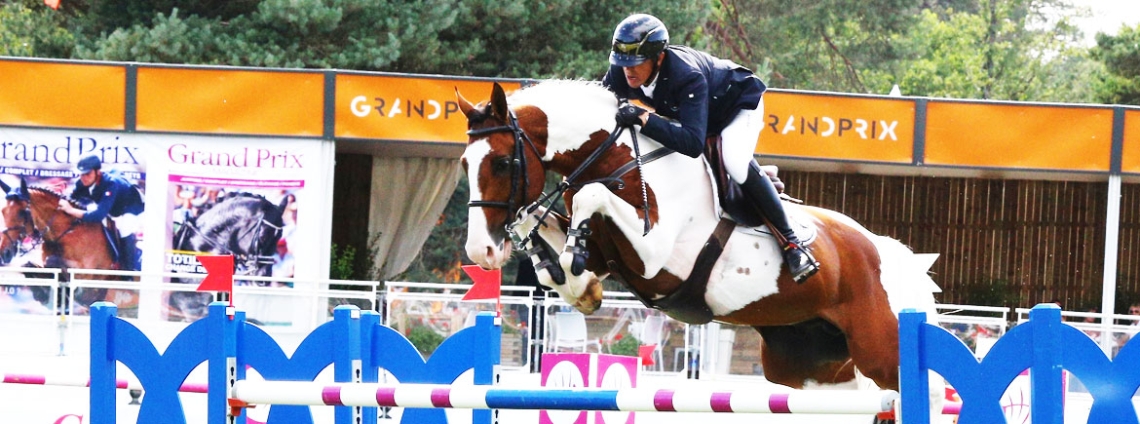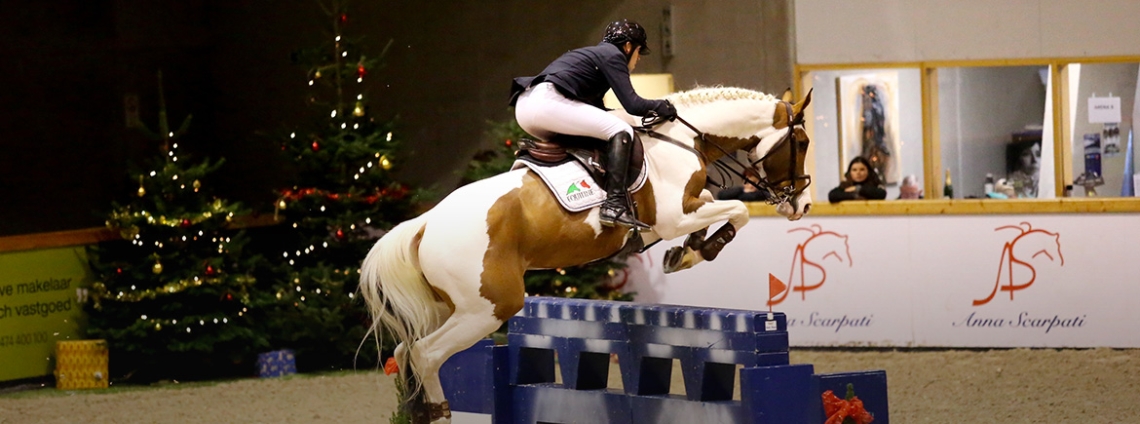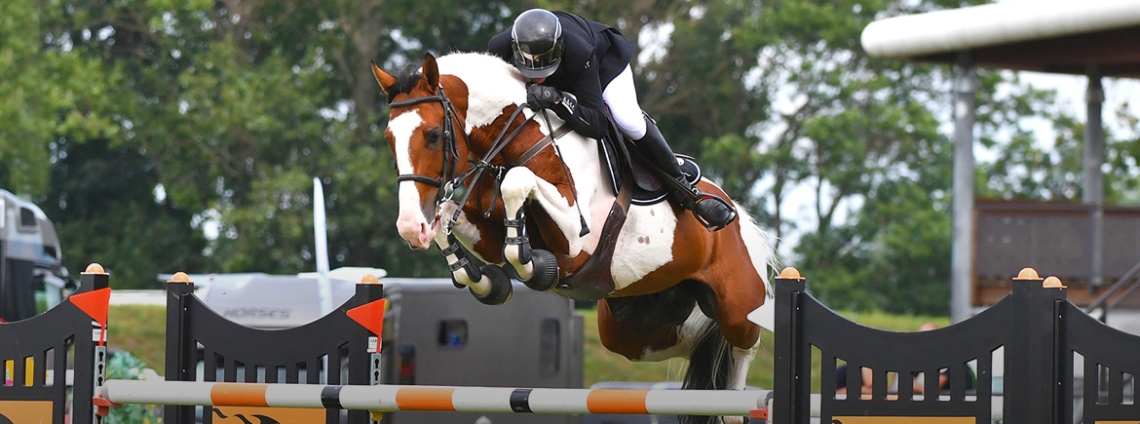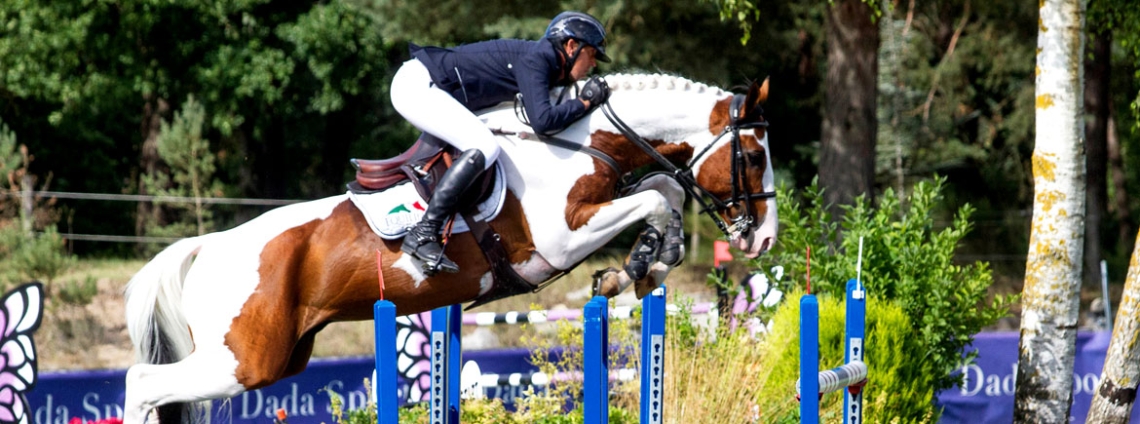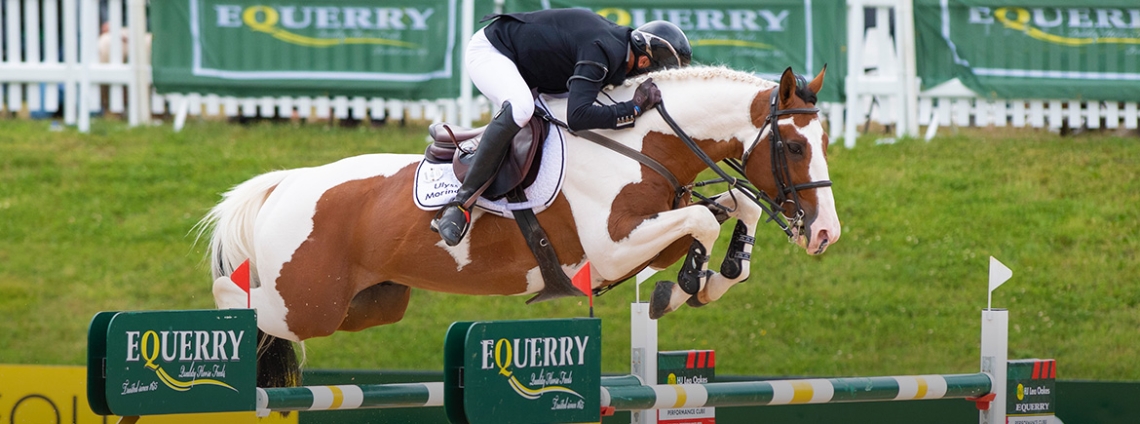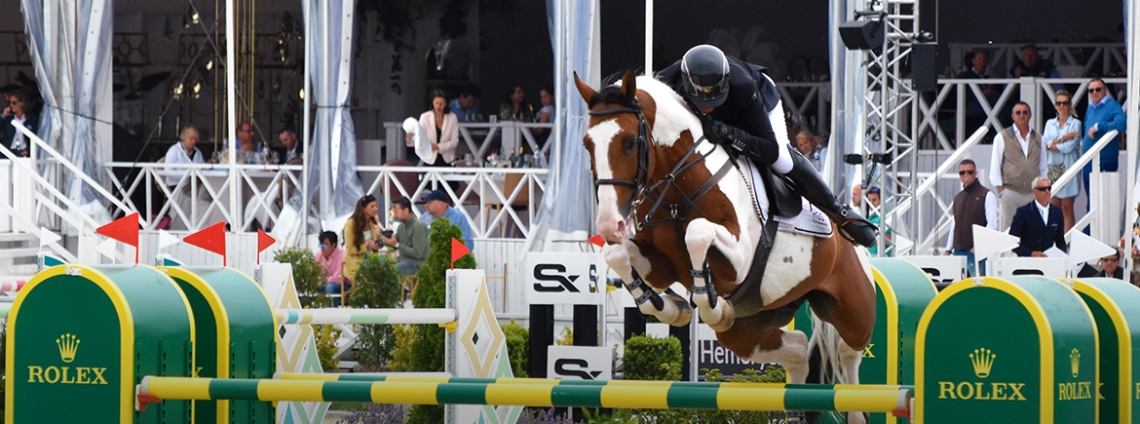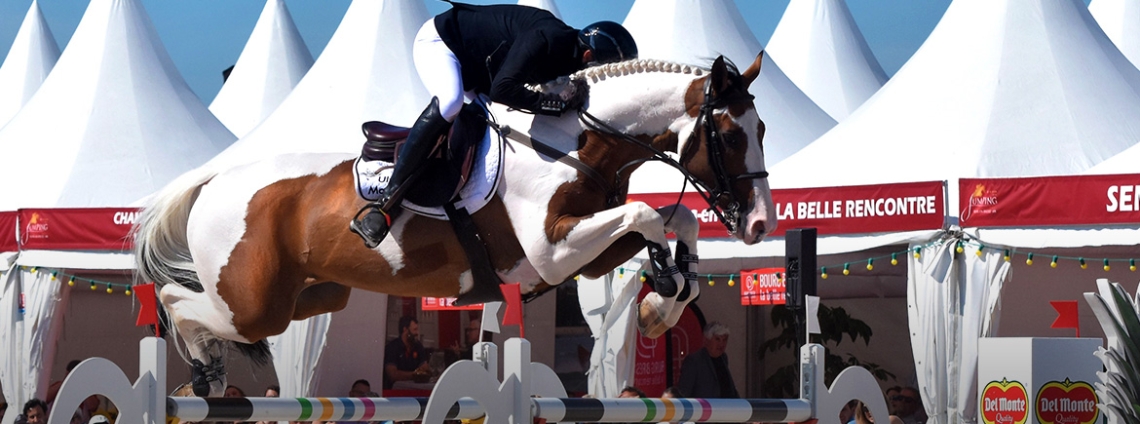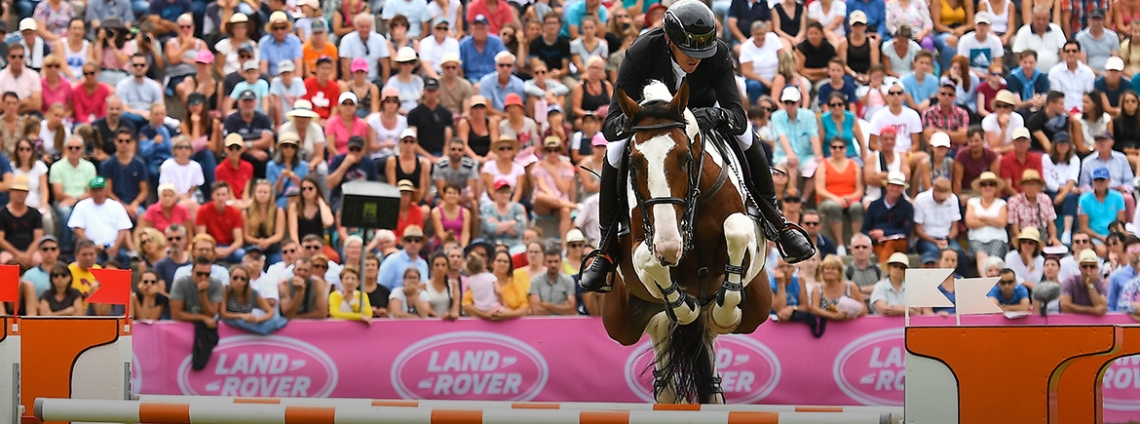Interview Air Showjumper, April 2020
Ulyss Morinda, Morfine de Muze and Lolita du Ta d’Bo are the three jewels in Herica Ravel’s crown
Best coloured stallion in action and issuing from the exceptional bloodline of Utricule, Ulyss Morinda (SF, by Utah van Erpekom, BWP x Jalisco B, SF) never fails to catch the eyes of the many people who follow international showjumping. Ridden by the Belgian Rik Hemeryck, the stallion is supported by two other crack horses in the making, Morfine de Muze (BWP, by Nabab de Rêve, BWP x Tinka’s Boy, KWPN) and Lolita du Ta d’Bo (BWP, by Igor van de Vaddenhoek, BWP x Wandor van de Mispelaere, BWP). This is a meeting with Herica Ravel, the passionate and exciting owner.
The 2019 winner of the 4* CSI Grand Prix at Bolesworth in the UK, who finished 8th in the 1m55 Grand Prix in the 3* CSI at Knokke, Ulyss Morinda never ceases to attract attention on the international scene with his Belgian rider, Rik Hemeryck. In the shadow of this partnership stands a very supportive owner, Herica Ravel, who is the breeder of this Selle Français stallion. Five years ago she made the decision to entrust him to one of the best Belgian riders, for whom she also acquired two new mounts at the end of 2019.
Airshowjumper (AS) : Before the 2* CSI at Lier in mid February, where he produced three clear rounds in three classes, Ulyss Morinda hadn’t appeared in competition since the 5* CSI at Dinard in August. Why did you choose to take such a long break?
Herica Ravel (HR) : In 2019 Ulyss had a very good season (notably winning the 4* CSI at Bolesworth) and we decided to stop competing in August. At the 5* CSI at Dinard he showed signs of being tired, and we said to ourselves, with Rik, that this was enough for him. We believe that horses have a ‘jump capital’ - that’s to say they can produce a certain number of jumps over great heights, a number that varies for each horse. So, we told ourselves that what Ulyss didn’t jump in 2019, he would jump later, especially since he is only twelve this year.
AS : After Lier, Ulyss set off for Royan for the two 2* CSIs. There, he won, after a good jump-off, a 1m45 qualifying event for the Grand Prix on the second weekend. Are you satisfied with this start to the season?
HR : After winning this ranking class in Royan, Ulyss had a small mistake in the Grand Prix. We were delighted with this start to the season, and totally reassured that Ulyss was still himself and in the same form as the previous year. He walked the 1m45 class that he won, and we said to ourselves that the horse would be ready to return to 1m60 Grand Prix. However, Rik told me he didn’t want to go too fast to give him plenty of time to remuscle himself. He is very attached to Ulyss, who is an excellent horse, and didn’t want to rush into 4* or 5* CSIs within a month.
AS : At Royan, Rik Hemeryck also introduced two other mounts belonging to you : Morfine de Muze and Lolita du Ta d’Bo. These two horses jumped there in classes between 1m30 and 1m40. Could you tell us about them?
HR : My husband, Thierry, and I bought these two horses around December. Rik has great faith in Morfine, whom he has owned 50% since the horse was six months old. This horse has therefore done all his training in the Hemeryck-Godart Stables. It may not be obvious, but Morfine has a lot of energy yet is also very sensitive. On the other hand, over fences, he doesn’t ask anything of himself and makes no effort always giving the impression that he’s jumping over cavalettis! The idea of stopping in front of a fence has never crossed his mind. He barely competed as a four and five year old, because Rik doesn’t like to compete his young horses on the circuit dedicated to them. As a six year old, he competed in the CSI classes reserved for six year olds, where the courses are generally lower than those you find in the Classic Cycles in France. He was still physically growing and filling out, so Rik often competed with him in two competitions instead of three in these CSIs. Morfine really began his career at seven years of age, as Rik had predicted. So I bought him at the end of 2019 and we now think he has the potential to become a crack showjumper. He showed his potential at Royan., where he produced five clear rounds out of the six he competed in. Besides that, he comes from an exceptional line, that of the extraordinary Querly Chin and Narcotique de Muze II. This line has produced a number of great performers, and the dam of Morfine, Heroine de Muze, competes herself in 1m60 Grand Prix (ridden by Taizo Sugitani).

The very promising Morfine de Muze in the arena at Royan © Séverine Moronval
As for Lolita du Ta d’Bo, she went to the final of the Seven-year-old World Championships at Lanaken, where she finished in the top 20 ridden by Thierry Goffinet. Her old owner then entrusted her to Rik, with the aim of furthering her career commercially. He started her over 1m25 and 1m30, and from that moment I adored this mare. After that, she easily progressed to 1m35 classes, then 1m40 and 1m45 competitions which she jumped with ease. That said, unless she produces a big surprise, we don’t think she’ll be a 1m60 Grand Prix horse – unlike Morfine – but she should be able to win classes at 1m50, which is already better than most. Besides which, I was looking for a horse that Rik could ride to qualify for the Grand Prix events, to keep Ulyss fresh for the big event. I didn’t dare say I was going to find a second Grand Prix horse, because they don’t crop up very often, but ultimately I have the impression that Morfine might fit that description. Lolita has a lot of energy, she’s a bouncy mare that I consider ‘unstoppable’. She’s generous and exceptionally courageous, especially in the arena where she gives her all.
AS : What should have been your programme for the horses after this Charentaise tour?
HR : Rik organises the programme as the season progresses for most of his horses, depending on how he feels about the courses. For the more mature and already seasoned horses, he sometimes says which big competitions he wants to go to, but in general their programme is for the most part made in function with the impressions he has from each horse. For example, if he feels his mount is on top form, he might ask to take part in a 5* CSI, but he won’t say that three months in advance. We had still planned some competitions for Ulyss, which he has done regularly, namely the 3* CSI at Maubeuge and the 4* at Bourg-en-Bresse. For the rest, the programme was not too defined, except that Rik had said to me that Morfine would be jumping in the 1m50 classes before the end of the year. Lolita, on the other hand, had to remain a little longer in 1m40 so as not to rush her, before deciding where to go next with her. I know that one day, Rik would like to return to very big contests as part of the Belgian team. I, too, would love to do these competitions, and that’s why I bought these horses, because we can’t go to these events with only one good horse, but rather we need two or three.

Lolita du Ta d’Bo here at the CSI of Royan © Séverine Moronval
AS : With the health crisis currently striking the whole planet, all the competitions have been cancelled and they risk not being resumed for some time. Aren’t you afraid that this long period out of competition will have a negative impact on horses’ careers?
HR : For us, the situation is not catastrophic, since Ulyss is only twelve, and this is the moment when horses reach their peak. As for Morfine, he is only eight, so it’s no problem if he doesn’t jump in big classes. With him and Lolita, who is nine, we have plenty of time. On the other hand, for people who have horses over fourteen, a stop at the moment may be more serious.
AS : In this context then, how are your horses being worked?
HR : As usual, the horses go out in the paddock every day, and also work a lot out of doors. Ulyss isn’t jumping at all at the moment. Anyway, he never jumps big fences at home, or even in the warm-up arena in competitions, because he doesn’t like doing that. He can jump anything in the main arena, but when relaxing, Rik keeps him over 1m40 only, to a maximum of 1m45, including before a 1m60 Grand Prix. At the moment, he goes trotting every other day, and works on the flat with Rik in between whiles. Morfine and Lolita jump about once a week. They work on small courses over 1m10, but jump a bigger course about once a week. Lolita works over 1m40, and Morfine over a good 1m50, over which he needs to make no effort. Rik also told me that in Belgium it is possible to go for outdoor training courses provided no more than three people are present. This possibility is really there to continue to train young horses, but doesn’t interest ours.
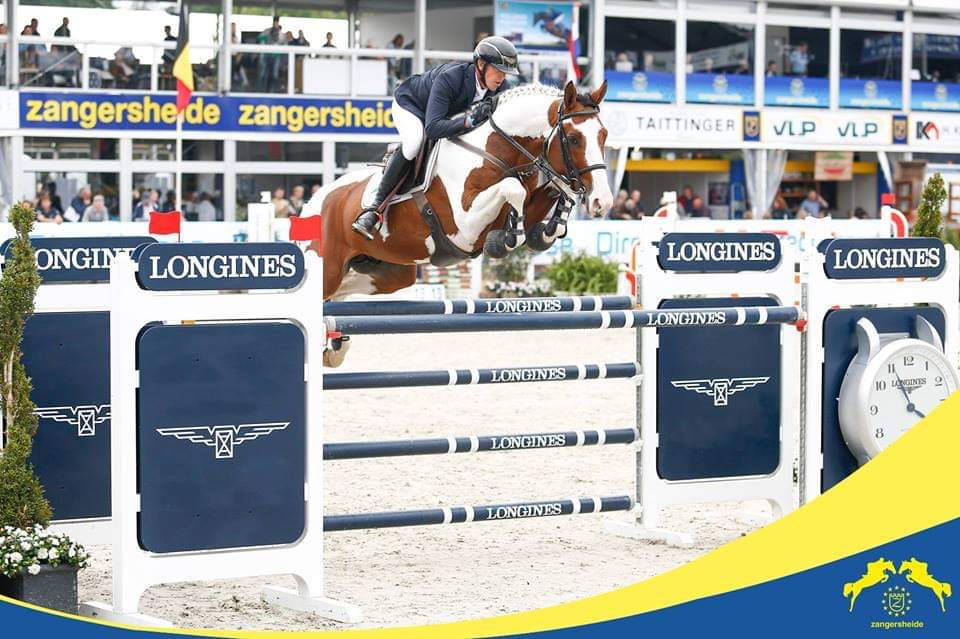
Ulyss Morinda at Lanaken, in the class ‘Sires of the World’ © J-Image
AS : In addition to his sporting career, Ulyss Morinda is a much in demand stallion who has already had nearly a hundred offspring registered in France, and still others abroad. Do you manage his breeding career?
HR : Yes indeed, I am the one who manages Ulyss’s stallion career. The company Gènes Diffusion also offers him in their catalogue, the purpose being to give him even more visibility. The idea is that Gènes Diffusion will reach their own clientele, whom I don’t know, for example at trade fairs the company goes to. People who already know Ulyss via the Hemeryck-Godart Stables website, for example, or my own, pass via me, especially since it’s I who manages the breeding cards.
AS : Have you noticed a decrease in the number of straws sold this year, due to the COVID-19 pandemic?
HR : There is currently a slight decline, probably due to the financial climate. Conversely, quite a few people are taking advantage of the fact that their mares can’t compete for a long period so are deciding to put them in foal. So yes, there is a decline, but a less important one than expected. Besides, it’s perhaps more marked in France than in other countries, because the Belgium, Swiss, English, the Germans or even the Americans are continuing to have mares covered.
AS : Certain performance stallions like Quel Homme de Hus or Quabri de L’Isle have been producing fresh semen this season because of the cessation of competitions. Have you considered doing the same with yours?
HR : Rik doesn’t really want to, and neither do I, because we don’t want to disturb Ulyss’s normal rhythm. I don’t need extra semen straws right now, so I don’t see the point in bothering Ulyss with delivering semen, when he’s used to being at Rik’s, where he’s turned out in the paddock every day, for example, and ridden by his partner.
AS : What are your goals for your horses now?
HR : My goals will first depend on what we have the right to do, because for the moment, there is nothing we can do. It will depend also on the state of fitness of the horses when they return to work. I really think that Rik doesn’t have fixed goals, because that’s the way he functions. As for me, it’s not my job to choose the goals, even if we often discuss them together.
Timothée Pequegnot

